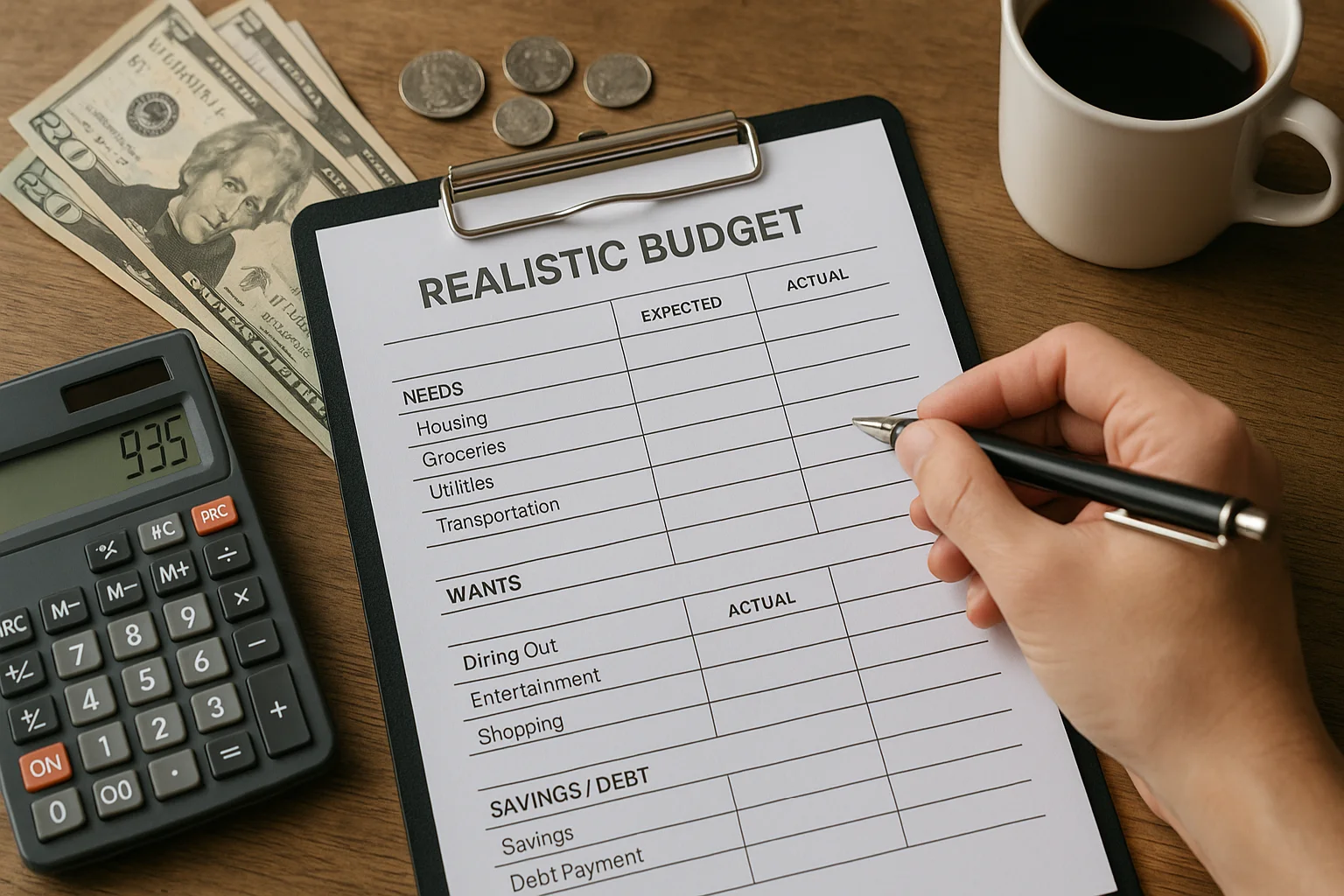A budget isn’t just a spreadsheet filled with numbers — it’s a roadmap to help you take control of your money, reduce stress, and reach your financial goals. But creating a realistic budget, one that you can actually stick to, is the part most people struggle with.
This guide will walk you through the exact steps to build a budget that works for your lifestyle, and more importantly, how to make it a lasting habit.
Why Budgeting Matters
Budgeting gives you clarity over your finances. It lets you:
- Know exactly where your money is going
- Avoid overspending
- Identify saving opportunities
- Plan for short- and long-term goals
Most importantly, a good budget helps you spend money intentionally — not reactively.
Step 1: Calculate Your Monthly Net Income
Your net income is the amount you take home after taxes and deductions. This is the number you should base your budget on.
Sources may include:
- Full-time or part-time job salaries
- Freelance work or side gigs
- Government benefits
- Passive income (e.g., dividends, rental income)
If your income varies month to month, take the average of the last 3–6 months to create a baseline.
Step 2: Track Your Expenses for One Month
Before creating a budget, you need to know where your money is currently going.
Break your spending into categories:
- Housing (rent/mortgage, utilities)
- Transportation (gas, public transit, car insurance)
- Food (groceries, dining out)
- Insurance (health, car, home)
- Debt payments (credit card, student loans)
- Entertainment (subscriptions, outings)
- Miscellaneous (gifts, personal care, clothing)
Use apps like Mint, YNAB, or Spendee, or track manually with a spreadsheet.
Step 3: Categorize Needs, Wants, and Savings
To build a realistic budget, divide your expenses into three key categories:
- Needs: Essential for survival — rent, food, utilities, basic transportation
- Wants: Non-essentials that improve quality of life — Netflix, dining out, hobbies
- Savings/Debt: Emergency fund, retirement, debt payoff
This sets the stage for applying a budgeting method that aligns with your lifestyle.
Step 4: Choose a Budgeting Method
There’s no one-size-fits-all solution, but these are the most popular and beginner-friendly options:
The 50/30/20 Rule
- 50% for Needs
- 30% for Wants
- 20% for Savings and Debt Repayment
It’s ideal for people with steady incomes and minimal debt.
Zero-Based Budgeting
Every dollar has a purpose. Income minus expenses should equal zero. Great for those who want total control over their money.
Envelope System
Use cash or digital envelopes to allocate a set amount to each category. When an envelope is empty, that category is done for the month. Good for controlling overspending.
Step 5: Set Realistic Limits for Each Category
Now it’s time to assign dollar amounts to each budget category. Be honest and conservative. Overestimating income or underestimating expenses is a common reason budgets fail.
Example:
- Rent: $1,000
- Groceries: $300
- Transportation: $200
- Savings: $250
- Subscriptions: $50
Tip: Leave a small buffer (around 5–10% of your income) for unexpected expenses.
Step 6: Automate Your Finances
Automation makes sticking to a budget easier by removing emotion and temptation.
Automate:
- Savings transfers (right after payday)
- Bill payments (to avoid late fees)
- Credit card payments (at least minimum balance)
Most banks and budgeting apps allow you to set up recurring payments and transfers.
Step 7: Review Weekly and Adjust Monthly
A budget isn’t set in stone. Life changes — and your budget should, too.
Weekly Check-Ins:
- Look over your spending
- Adjust habits if you’re close to overspending
Monthly Reviews:
- What worked?
- Where did you overspend?
- Can you save more?
These reflections help you improve over time without feeling restricted.
Step 8: Include Fun Money
If you cut out all your wants, you’ll eventually feel deprived and abandon your budget. Allow room for joy — whether it’s a monthly dinner out, a new book, or a hobby.
Set a limit, and enjoy it guilt-free. A budget should make life better, not more stressful.
Common Budgeting Mistakes to Avoid
- Being too strict: Leads to burnout and frustration
- Not updating the budget: Life changes, and so should your budget
- Ignoring irregular expenses: Plan for birthdays, holidays, and car repairs
- Not including savings: Treat savings like a fixed expense
Avoiding these pitfalls will make your budget more effective and less stressful.
Building Financial Discipline
The goal of budgeting isn’t to be perfect — it’s to be aware, consistent, and intentional.
Discipline improves with practice. The more you see the benefits of budgeting (less stress, more savings, debt reduction), the more motivated you’ll be to stick with it.
A Budget is a Tool, Not a Trap
Budgeting doesn’t mean you can’t spend — it means you spend with purpose. When you tell your money where to go, you take back control. That control leads to confidence, and confidence leads to freedom.
Start simple. Stay flexible. Celebrate small wins. Over time, your budget will become a natural part of your life — and your bank account will thank you.
In God We Trust

